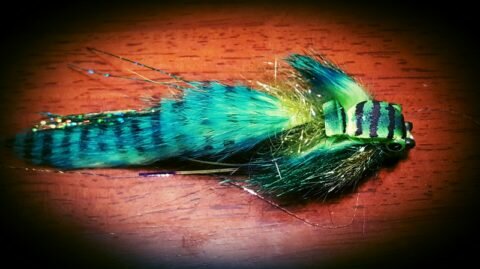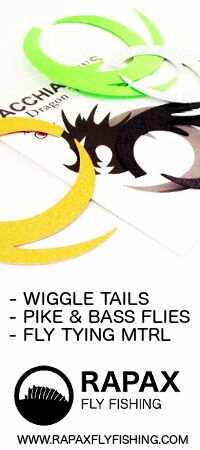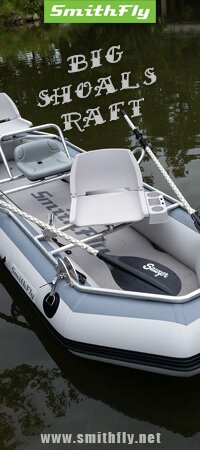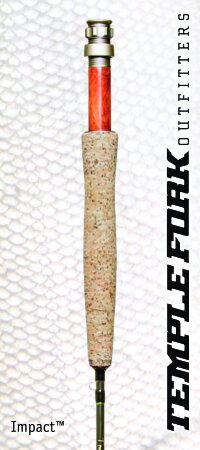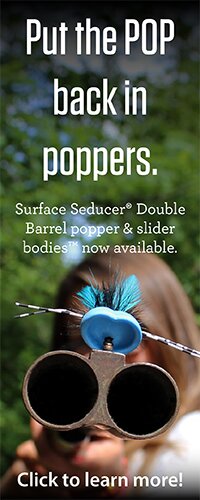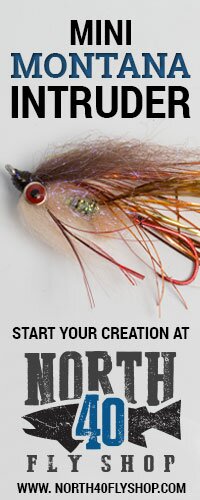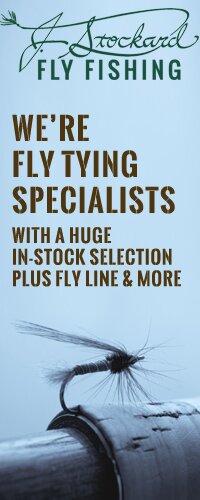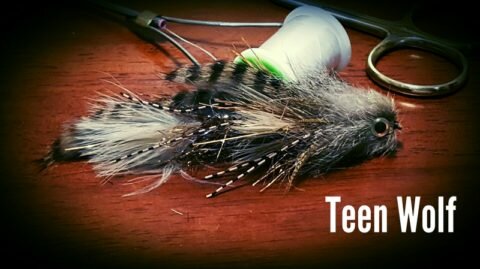
Having designed commercial patterns for Rainy’s Flies for two years now, I am constantly pushing the boundaries of movement and effectiveness with my patterns. Being a Bass guy my whole life, my eyes weren’t opened to the whole long rod thing until a family trip to Montana in high school changed my perception of what fly fishing is. Big streamers for aggressive brown trout was the ticket. I quickly learned that these trout can be fished very similar to smallies on a river system by quickly ripping streamers through pockets, over drops, and around cover. I was a convert almost instantly.
When I got back home I picked up a simple tying kit and began to experiment. I will admit I tied a lot of awful buggers and some terrible Adams before I had something that resembled a decently tied fly. I would go to Chris Helm’s shop in Toledo, Ohio and watch a true master spin and stack deer hair and go to Cabela’s on Saturday mornings to watch guys like Bear Andrews and Dennis Potter tie and after a while, all the time and energy paid off. I was able to design patterns and go fish with moderate success. I really started getting into Pike with their nasty attitude and speed. The tug is the drug when you fight these toothy, slime bullets. The more time on the water I spent, the more I started to notice things and by the time I was in college I pretty much had my home waters figured out.

I have learned a lot along the way and now that I am getting waist deep into the waters of the business side of things, I am learning the fly industry can be fickle and tough. You always have to self-advocate and no matter how many patterns you have on the commercial side, you always have to keep being creative and inventive. I do a fair amount of realistic tying but those flies never see the water. The real bread and butter is being able to tie a fly that works for the intended species and is easily repeatable. For the most part, my flies are developed for the way I fish. The people that I take fishing and my friends always get annoyed with me because I fly fish for bass like a tournament bass fisherman. I rip streamers or drift a nymph through a hole and if no takes I move on. I really like to cover water when I fish, especially if I’m wading. When I tie a streamer, I want the movement to be instantaneous when entering the water, get the attention of the fish, and then trigger a strike. Things like the movement of rabbit and hackle together or my addictive and generous use of ice dub in a dubbing loop to create collars and bodies lends to this method. I generally fish clear water so the patterns must not spook fish but have a good draw from a distance.

I was a teacher by trade so I love teaching the art of fly tying as well. The trick to becoming a good tier is always simply doing it. Instead of just trying to tie a wooly bugger, tie seven or eight in a row. You have to work out the kinks in the process whether it be rushing the eye or overly bulky bodies. You will tie a bunch of ugly fuglies before you tie something decent so be prepared for that. Have fun while you are at the vise. Contrary to popular belief, you don’t need a $500 vise and expensive tools to tie. The same goes for gear, it is really nice to have a $300 fly rod, but it simply isn’t a necessity. Get something in your price range and go fish. It’s as simple as that. A little extra information though, for big or tough fish you don’t want to skimp and be outgunned.
For tying tips, questions, and inquiries folks can visit my facebook business page River Raisin Fly Company or email me at for water levels, suggested patterns, and additional information about myself, my patterns, and the adventure we all call fly fishing.

